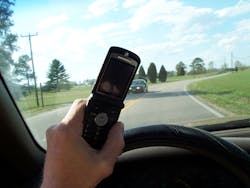During the month of April, law enforcement agencies throughout California will be especially focused on taking enforcement action on what it calls “zombie” drivers, drivers who redirect their attention from the road to some other distracting behavior, like talking on a cell phone or text messaging.
(For tips on how to avoid becoming a distracted driver, click here)
More than 200 local law enforcement agencies and 103 CHP offices will be participating in the month-long, life-saving effort. Similar to last year’s campaign, there will be both an enforcement and educational component. The overall goal is to reinforce to the motoring public the dangers of distracted driving and reduce the number of people impacted by this destructive behavior.
The California Highway Patrol (CHP) along with the California Office of Traffic Safety (OTS), Impact Teen Drivers, and law enforcement agencies statewide have launched the second annual National Distracted Driving Awareness Month campaign, “It’s Not Worth It!”
During the campaign kickoff month in April last year, more than 52,000 citations were issued by law enforcement statewide, four times the monthly average. A first-time citation will cost a minimum of $159, with a second violation at least $279.
“Drivers need to ask themselves, ‘Is that phone call or text message worth my life or the lives of those around me?’” said CHP Commissioner Joe Farrow. “The answer is simple, it’s not worth it. Every distraction affects a driver’s reaction time, and things can change without notice.”
According to a study conducted by Carnegie Mellon University, the act of talking on a cell phone can reduce more than 35% of the brain activity needed for driving. Essentially, distractions change a seemingly good driver into a “zombie” behind the wheel, Farrow said.
To dramatize this “zombie-like behavior behind the wheel,” zombies are being added to this year’s “It’s Not Worth It” campaign. The campaign will be supported by statewide grassroots outreach, social media activities and television commercials that encourage people to focus on the road and not be a “zombie” driver.
“It is important to note that the success of this campaign is not measured by the number of citations the officers write, because we are hoping that by calling attention to this effort we will gain voluntary compliance,” added Farrow. “The success of the campaign is measured by the number of lives saved.”
